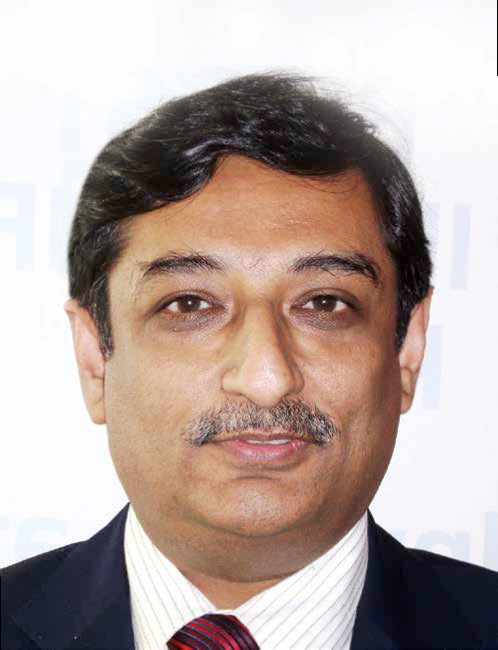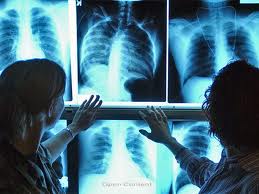
 Dr Manoj Chadha,
Dr Manoj Chadha,
Consultant Endocrinologist Hinduja Healthcare Surgical, Khar(W) Mumbai
Diabetes mellitus is a metabolic disorder, characterised by chronic hyperglycemia, which is associated with absolute or relative deficiency of insulin. It is diagnosed by a fasting plasma glucose (FPG) of > 126 mg percent, random plasma glucose (RPG)> 200 mg percent or a postprandial plasma glucose (PPPG)> 200 mg percent on two different occasions. In normal persons the FPGis < 100 mg percent and a PPPG is <140 mg percent. So there is an intermediate category where the FPG is 100-125 mg percent and/ or PPPG is between 140 and 199 mg percent. This category has been given various names in the past (IFG, IGT etc) but is now recognized as pre-diabetic.

It is estimated by the IDF (International Diabetes Federation)that the number of diabetic patients in the world is 300 million and the number is growing exponentially every year. Nearly 20 percent of this diabetic population lives in India! A very conservative estimate thus puts the number of diabetics inIndia to be around 60 (to 80) million (6 to 8 crores). Studies from different States of India have estimated that 10-15 percent of population above the age of 20 years is suffering from Diabetes mellitus. These figures do not take into account an equal number of pre-diabetics who are waiting in the wings to be diagnosed. Thus nearly 25 percent of our population has either Diabetes or is pre-diabetic. It is important to pick up these pre-diabetics. They are at equal risk as Diabetics to develop heart disease, stroke or other atherosclerotic complications. If left untreated they are very likely to progress to Diabetes mellitus. The positive side of the story is that they can reverse back to normal with a change in their life style!
Diabetes mellitus is a progressive disorder. By the time a patient is confirmed to have Diabetes mellitus, he has already lost 50 percent of his insulin producing cells (beta cells). The only way to prevent this relentless destruction or at the least delay the progression of this disease is to control the plasma glucose values to as near as possible. In spite of all the advances in management of Diabetes, we do not have a therapy to regenerate the dead beta cell. Thus an important point to remember is that that eventually all diabetics would end requiring insulin. This may happen within 15 or 20 or 25 or 30 years or even longer after diagnosis of the disease.
Inspite of the various presentations of this disease that we read about (polyuria, polydypsia, polyphagia, easy fatigability, weight loss, delayed wound healing, excessive itching, visual disturbances etcetc), more than half the patients are asymptomatic. They are picked up on either routine health check ups, pre-operative investigations, pre-employment or pre-insurance check ups.

Diabetics are likely to develop complications as the duration of disease progresses. Quite a few of them (10 percent) have evidence of complications at the time of diagnosis. Certain complications like micro vascular complications (nephropathy “ kidney, retinopathy “ eye, neuropathy “ nerves and vasculopathy “ small vessels) are typical of Diabetes mellitus. The macro vascular complications (heart disease, stroke, peripheral vascular disease etc) are commoner than that seen in non-diabetics. In addition macro vascular complications occur at an earlier age and tend to be more serious than non-diabetics. Early in the course of the disease these complications tend to remain silent and hence these patients are asymptomatic. If diagnosed early enough, these complications can be reversed. However once they have crossed a point of no-return, then we can only hope to treat the patient and slow down the progression of the complications.
By the time a patient is confirmed to have Diabetes mellitus, he has already lost 50 percent of his insulin producing cells (beta cells)
Nearly three decades ago the UKPDS (United Kingdom Prospective Diabetes Study) was conceived and carried out in multiple centers across UK. The study recruited nearly 5300 newly diagnosed diabetic. These patients were randomized to receive intensive standard of care or conventional care. At the end of the study period (7-10 years of follow up), the intensively treated patients had a better control and outcome in terms of reduction in mortality due to Diabetes, all-cause mortality, micro vascular complications, stroke and heart attacks. When all these patients were followed for another decade on conventional treatment, the original group of intensively treated patients continued to do better than the original conventionally treated group. The moral of this study was that patients who were intensively treated in the early stages of the disease do well even over the following decade. This phenomenon has been called as the Legacy Effect.
Looking at the other side of the coin, three very large studies ACCORD, ADVANCE and VADT picked up nearly 25,000 elderly diabetics (65 yrs) who had been having the disease for more than 10 years. These patients had evidence of underlying heart or cerebrovasculardisease. An attempt was made to control HbA1c < 6.5 percent by any treatment, the physician chose. The ACCORD was terminated prematurely as the mortality in the intensively treated group was more than that seen in the conventionally treated patients. ADVANCE and VADT also did not showany advantage in the intensively treated group over the conventionally treated group.On analysis of the ACCORD data, it was seen that those patients who already had an underlying heart disease and poorly controlled diabetes were the ones likely to have poor outcomes with intensive treatment. It is thus recommended that every diabetic patient (Type 2) should have the following consultations/ investigations at least once every year. The frequency could be increased as necessary if there was evidence of any underlying complication.
- Ophthalmology consultation
- Dental consultation
- Lipid profile
- Urinary albumin for renal function
- Glycosylated hemoglobin (HbA1c) Most of our patients have to pay for their medical expenses from their own pocket. Hence it makes a lot of sense to go for preventive health checks. The old proverb An ounce of prevention is better than a pound of cure is apt for this malady!
Be a part of Elets Collaborative Initiatives. Join Us for Upcoming Events and explore business opportunities. Like us on Facebook , connect with us on LinkedIn and follow us on Twitter , Instagram.










